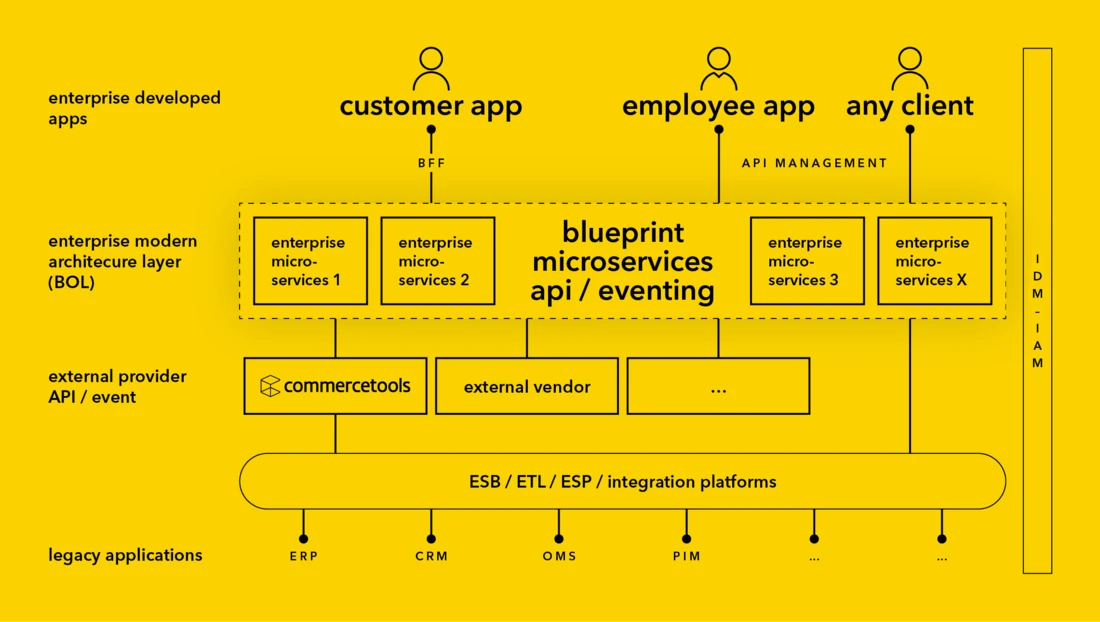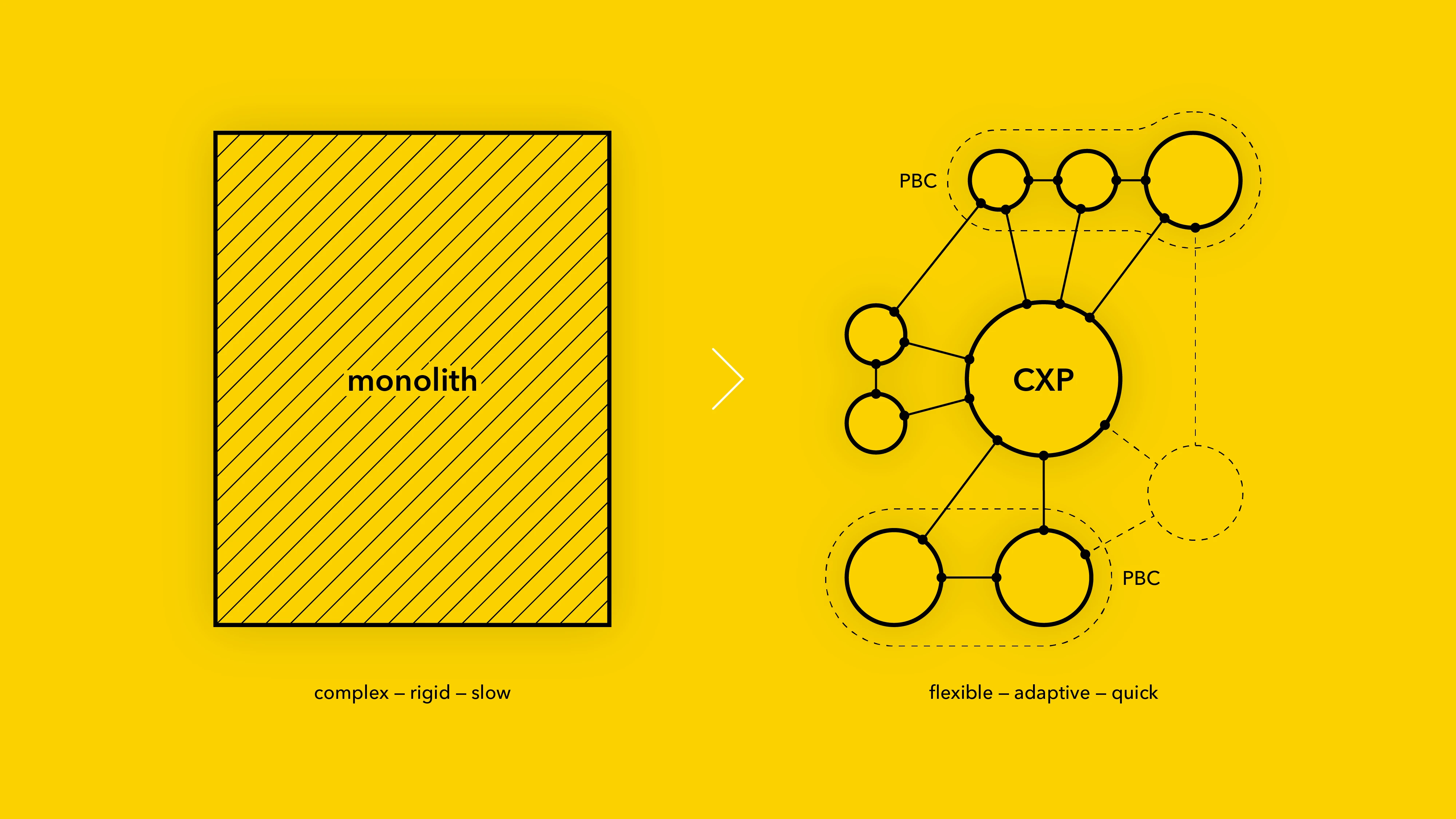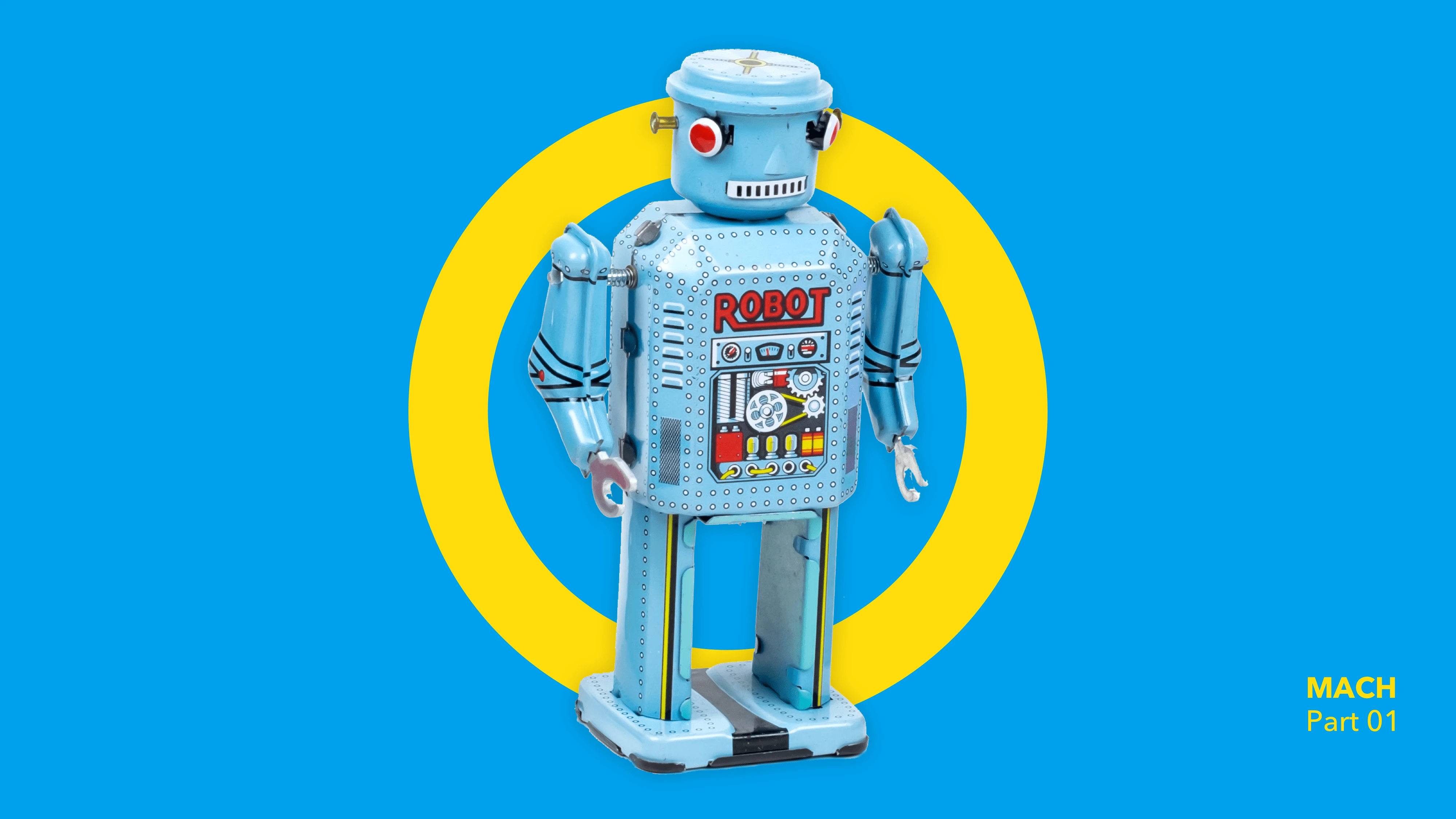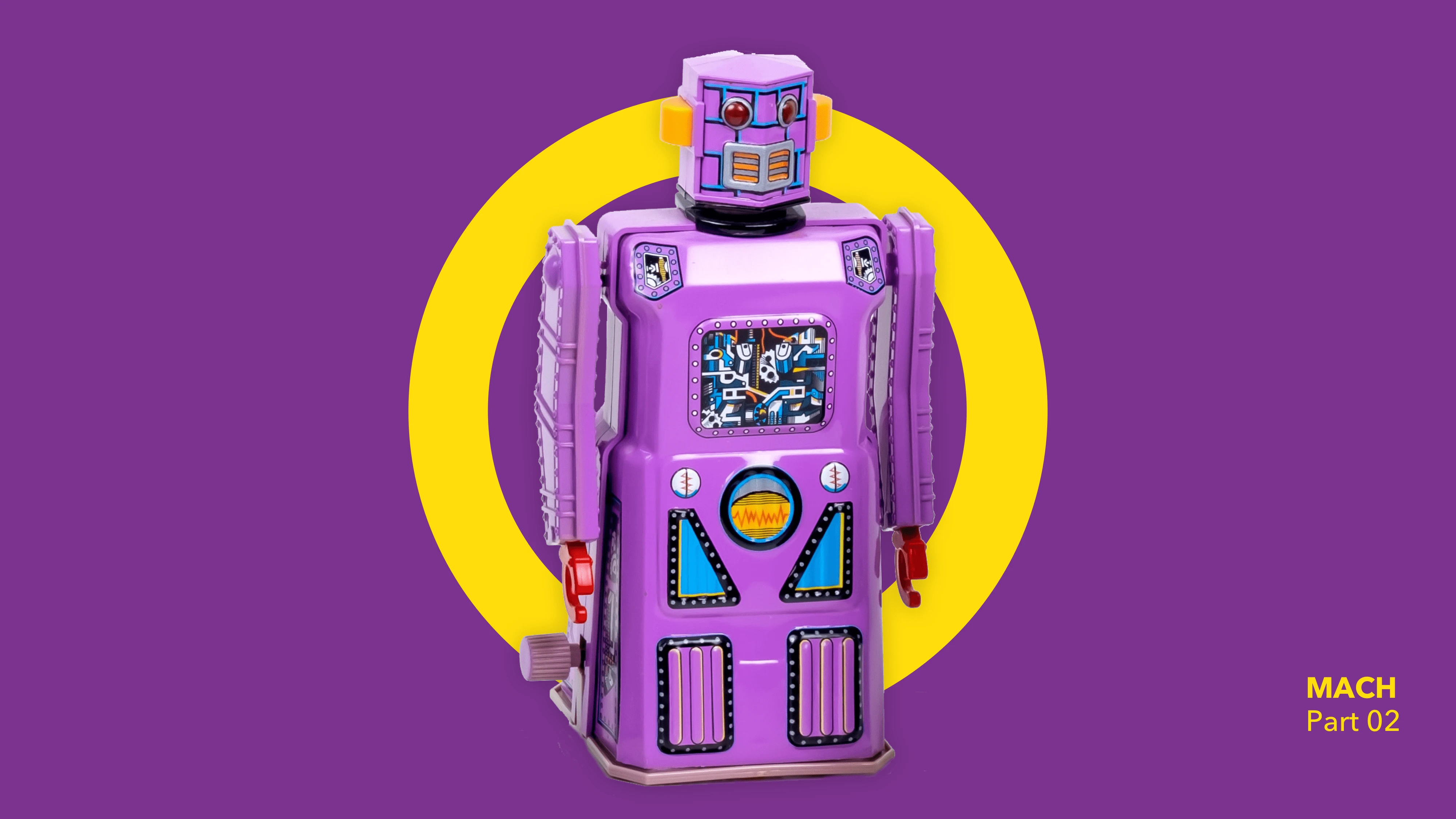
A global commerce platform for different B2B business models
The number of B2B companies offering digital buying and post-purchase processes has increased from 53 % to 65 % in 2021, according to surveys by McKinsey & Company. The share of digitally generated sales is now as large as direct sales via sales staff. Many B2B companies are feeling the pressure to digitise, as existing e-commerce solutions have often reached their end-of-life or are too expensive to operate, develop and scale cost-effectively due to years of customisation. Many companies are looking for new e-commerce solutions to support their long-term growth and help them enter new markets, geographies and business models.
Technology alone is not the answer
Technology marketing works. People believe that a technology solution will fix all their business problem. This is rarely the case, but is usually the trigger for a re-platform. Technology is just a means to an end; if there is no business strategy behind a new tool, it will never live up to the promise. Technology should solve business problems or challenges. Solution paths need to be broken down with respect to diverse user perspectives and mapped into concrete user journeys. Otherwise, how the new solution helps solve problems or implement strategies will not be clear.
For example, large manufacturers or suppliers are developing digital platforms to bypass wholesale structures and sell directly to their end customers. In some cases, such strategies are successful; the company can scale vertically and build a direct customer relationship. Dependence on wholesaling becomes smaller, and margins increase. In other cases, the company might not have sufficient knowledge of the market or wholesale logistics to serve new customer segments directly. Challenges in building business logic emerge, but the necessary changes to the business model is not made.
For companies making technology decisions based on business strategies, journeys and use cases, modern MACH-based e-commerce solutions offer extraordinary opportunities.
Composable Commerce Opens the Door to New Business Models
The composable commerce approach allows you to build a modular platform from reusable components. This gives you advantages in cost efficiency and greater flexibility and scalability than with classic, monolithic e-commerce solutions.
A component can be a single API or a complete frontend. It just needs to be self-contained, able to be added and removed from your platform as needed without much effort, and be business-oriented.
You can rearrange and replace components or reuse them for another use case. In this way, you achieve a flexible, scalable solution. This allows you to manage the complexity of different business models or business units. You increase cost efficiency when reusing and increase the rollout/adaptation speed.
Composable Commerce for B2B
- Flexibility / Best-fit functions without vendor lock-in
- Scaling / Repeatable models for rapid introduction and expansion
- Complexity / Headless technology adapts to any brand, front end and model
Flexibility in e-commerce
Traditional e-commerce solutions often have numerous out-of-the-box features. This is what many RfPs ask for. Out-of-the-box features are excellent when all the standard features are suitable for the business without customisation. But they can be frustrating if they lock the enterprise into features that are only partially suitable for the use case and difficult to customise.
In a composable commerce setup, components are independent and communicate with each other via APIs. You can exchange or add individual functions. It isn’t necessary to rebuild major system components or redevelop entire processes.
Modular architecture requires platform thinking and allows you to invest specifically in packaged business capabilities (function blocks) tailored to your needs. This will enable you to invest in areas relevant to you that are not part of a standard solution, such as complex product search or regulatory requirements.
Different business units can exchange individual components as needed, e.g., their own pricing logic for different customer groups or region-specific sales services. The flexibility comes from the growing number of mature Composable SaaS solutions available on the market in different areas (content, search, commerce, PIM, etc.). MACH-based SaaS solutions (microservices, API-first, cloud-native, headless) are widely accepted by the market and are widely considered a real alternative to traditional solutions. MACH solutions are designed so that you can integrate them with other MACH or Composable Enterprise-based principles.
The MACH approach helps you deliver complex projects faster. It is also more cost-effective than full in-house development or heavily modified solutions rolled out not as a platform but as a series of similar solutions depending on the country or business model. Compared to full in-house development, you do not need to redevelop standard functionality with MACH. You can focus on functionalities with differentiation potential. There are also no follow-up costs associated with upgrades, maintenance and further development of solutions.
Scale
Because many components can be shared and leveraged across business units, it's easier to scale via a composable commerce approach to ensure the cost-effective operation of your platform.
The composable approach allows you to securely reuse infrastructure components, core functions and data models across different regions, product groups and channels.
You group the components into a few repeatable models. These can share many different business units simultaneously (occasionally >100). You handle the maintenance of these shared components centrally. You perform rollouts quickly. Your business unit teams focus on aspects like custom logic and differentiating Customer Experiences.
Composable Commerce also makes it easier to take advantage of cloud scaling. With an API-first approach where all functionality is accessible through APIs, you combine custom and MACH-based SaaS solutions with services from leading hyperscalers like Amazon AWS, Microsoft Azure, and Google GCP.
Complexity
In line with the MACH approach, the front-end and back-end are decoupled. Data is stored neutrally in the backend and used for an almost unlimited number of touchpoints or frontends. This allows you to manage multiple brands and business models simultaneously on the same Composable Commerce Stack and implement changes quickly.
For example: a food service wholesaler runs an online platform for large customers and a marketplace model for small catering companies simultaneously.
A composable commerce approach allows the platform infrastructure to be shared using selected e-commerce features. The front-end experience, branding, pricing models, payment options, delivery logistics, etc., are unique to each business model.
If you want to develop in-house packaged business capabilities, establish a new microservices layer, also called Modern Architecture Layer or Business Object Layer, for this purpose. In doing so, you develop applications decoupled from the underlying interfaces.

The solution: Mindcurv's B2B-Accelerator
Mindcurv's B2B Accelerator+ follows this approach and consists of Packaged Business Capabilities. These leverage and extend the B2B capabilities of Commercetools. This enables rapid POCs, accelerates development and drives the completion of a composable commerce solution based on Commercetools.
The B2B Accelerator+ incorporates Mindcurv's many years of B2B e-commerce experience. It covers up to 90% of typical B2B use cases. With the help of the Accelerator, you develop modern B2B e-commerce solutions and customer portals with e-commerce capabilities.
B2B Accelerator+ is based on microservices and fully complies with MACH and Composable Enterprise principles. It offers a wide range of out-of-the-box functions (APIs). You use, extend and remove these as required. This allows you to quickly achieve a complete feature set while benefiting from the speed, flexibility, and power of composable commerce solutions.
- Copyright Header: Photo by Dan Cristian Pădureț on Unsplash


